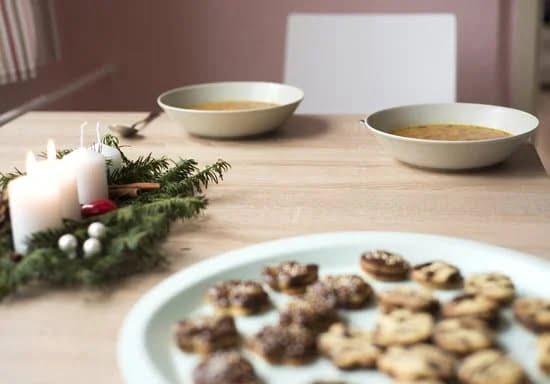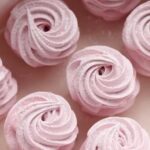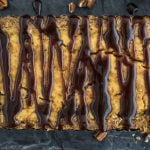Choosing the right piping tips is essential for cake decorating. These small, metal nozzles determine the shape and texture of the frosting as it is piped onto a cake, making them an integral part of creating beautiful designs. Whether you are a beginner or a professional baker, understanding the importance of selecting the right piping tips can greatly enhance your cake decorating skills.
In this article, we will explore why choosing the right piping tips is essential for cake decorating. We will delve into the different types of piping tips available and provide a comprehensive guide on how to use them effectively. Whether you are looking to create intricate designs or add creative flair to your cakes, having a solid understanding of piping tips is crucial.
Furthermore, we will highlight the top 5 piping tips for beginners, as well as delve into using professional piping tips and specialty ones to take your cake decorating skills to new heights. Additionally, we will discuss various designs that can be achieved using different piping tips, such as roses and ruffles.
Common challenges faced while working with piping tips will also be addressed along with troubleshooting solutions. Additionally, we will provide guidance on maintaining and caring for these delicate tools to extend their lifespan.
Lastly, customer reviews and expert recommendations will be highlighted to help you make informed decisions when purchasing your own set of piping tips. By the end of this article, you’ll have all the knowledge you need to find the perfect piping tips for your unique cake decorating style. So let’s dive in and discover how choosing the right piping tips can elevate your cake designs from ordinary to extraordinary.
Understanding Different Types of Cake Decorating Piping Tips
Cake decorating piping tips are essential tools for creating beautifully designed cakes. Understanding the different types of piping tips available can help take your cake decorating skills to the next level. In this comprehensive guide, we will explore the various types of piping tips and their uses.
There are several types of piping tips available, each with its own unique design and purpose. One commonly used type is the round tip, which can be used for outlining, writing, and creating dots on a cake. Another type is the star tip, which creates beautiful star-shaped designs and ruffles.
The petal tip is perfect for creating realistic flower petals such as roses or daisies. Additionally, there is the leaf tip, which is used to make foliage for floral designs.
One popular type of piping tip is the open star tip, also known as a drop flower or French star tip. This versatile tip can create a variety of designs including rosettes and shells. The closed star tip, on the other hand, creates more defined stars and zigzag patterns. The basketweave tip is ideal for creating textured patterns that resemble woven baskets.
To ensure you have all the necessary piping tips in your collection, it’s important to understand their uses and techniques. Using a combination of different tips can help you achieve intricate designs and textures on your cakes.
The Top 5 Piping Tips for Beginners
Round Piping Tip
The round piping tip is one of the most versatile and commonly used tips for beginners. It is perfect for creating borders, dots, letters, and basic outlines on cakes. The round shape allows for smooth and controlled piping, making it a go-to choice for beginners who are still getting the hang of using piping bags. With a round piping tip, you can easily create clean and precise designs to elevate the look of your cakes.
Star Piping Tip
If you want to add texture and dimension to your cake designs, the star piping tip is a must-have for beginners. This tip creates beautiful star-shaped decorations that can be used for borders, rosettes, shells, or even covering the entire cake surface with piped stars. The star-shaped openings in this tip give your designs an eye-catching look that adds depth to the overall appearance of your cakes.
Leaf Piping Tip
For those looking to incorporate natural elements into their cake designs, the leaf piping tip is an essential tool. With its distinct leaf shape, this tip allows you to pipe realistic-looking leaves onto your cakes. Whether you’re creating floral arrangements or adding foliage to your designs, the leaf piping tip gives your cakes a touch of elegance and sophistication.
Petal Piping Tip
The petal piping tip is ideal for creating delicate flower petals on your cakes. This tip mimics the shape of flower petals and enables you to pipe intricate floral designs such as roses or blossoms. By using different pressure techniques and angles with the petal piping tip, you can achieve various petal shapes and sizes to bring your cake creations to life.
Writing Piping Tip
If you’re interested in adding personalized messages or intricate details to your cakes, the writing piping tip is an essential tool. This tip has a small, round opening that allows for precise and controlled piping of letters, numbers, or intricate patterns. Whether you want to write a heartfelt message or add intricate lace-like details to your cakes, the writing piping tip will help you achieve professional-looking results.
As a beginner cake decorator, it’s important to start with these top 5 piping tips to build a solid foundation in cake decorating techniques. With practice and experimentation, you’ll soon master these tips and be ready to move on to more complex designs using professional and specialty piping tips. Remember, the key to success in cake decorating is patience and practice, so don’t be afraid to get creative and have fun with your designs.
Professional Piping Tips
When it comes to cake decorating, using professional piping tips can make a significant difference in the outcome of your creations. These tips are designed specifically for skilled decorators who want to elevate their cake designs and take their skills to the next level. Whether you’re a professional baker or an enthusiastic home decorator, investing in high-quality professional piping tips can help you achieve more intricate and sophisticated designs.
Professional piping tips are typically made from stainless steel, which makes them durable and long-lasting. They are also known for their precision and versatility, allowing decorators to create intricate patterns and details with ease. These tips often come in various shapes and sizes, giving decorators more options to explore different techniques and styles.
One popular type of professional piping tip is the star tip, also known as the open star or drop flower tip. This tip is commonly used for creating stars, rosettes, shells, and other textured designs. The French tip is another favorite among professionals, often used for creating ruffles on cakes with its unique shape.
| Piping Tip | Description |
|---|---|
| Star Tip | This tip is perfect for creating stars, rosettes, shells, and other textured designs. |
| French Tip | The French tip is commonly used for creating ruffles on cakes with its unique shape. |
In addition to these popular choices, there are many other types of professional piping tips available on the market. The petal tip is ideal for creating realistic flowers such as roses and tulips. The basketweave tip can be used to create intricate woven patterns that mimic a basket’s texture.
The leaf tip is perfect for adding delicate and lifelike leaves to floral designs. These professional piping tips offer decorators the opportunity to experiment and create stunning designs that are sure to impress.
In summary, using professional piping tips can take your cake decorating skills to new heights. With their durability, precision, and versatility, these tips allow decorators to create intricate and sophisticated designs. From star tips to petal tips, there are plenty of options available for those looking to enhance their cake decorating skills. By investing in high-quality professional piping tips, you can elevate your creations and showcase your talent in the world of cake decorating.
Specialty Piping Tips
When it comes to cake decorating, using specialty piping tips can take your designs to the next level and add that wow factor. These specialized tips are designed to create unique shapes, patterns, and textures that can make your cakes stand out from the crowd. Whether you’re looking to create delicate lace-like designs or intricate floral patterns, there is a wide range of specialty piping tips available to help you achieve your desired effect.
Here are some popular types of specialty piping tips that can add creative flair to your cake designs:
- Petal Tips: These tips are specifically designed for creating realistic flower petals. With their curved shape and varying sizes, petal tips allow you to easily pipe intricate and lifelike flowers such as roses, daisies, and lilies. The key is in the technique – gently squeezing the piping bag while moving the tip in a circular motion will give you beautiful petals with defined edges.
- Leaf Tips: Leaf tips are indispensable for adding foliage and greenery to your cake designs. These tips have a V-shaped or curved end that produces realistic leaf shapes when piped onto the surface of your cake. They come in different sizes and styles, allowing you to create various types of leaves like ferns, ivy, or even palm fronds.
- Basketweave Tips: If you want to give your cakes a textured look resembling a woven basket, basketweave tips are the way to go. These tips have multiple small openings that can create vertical or horizontal lines when piped onto the cake’s surface. By alternating between thick lines and thin lines, you can achieve an authentic woven appearance that adds visual interest.
- Grass Tips: Perfect for creating realistic grass or fur textures on cakes, grass tips have multiple small holes through which frosting is piped onto the surface in a continuous motion. This results in a tufted, grass-like effect that can be used to cover the base of a cake or add details to animal-themed designs.
Using specialty piping tips requires practice and patience, but the creative possibilities they offer are endless. Experiment with different techniques and combinations to discover unique effects that will make your cake designs truly special. Whether you’re a hobbyist or a professional baker, incorporating these specialty tips into your repertoire will elevate your cake decorating skills and allow you to bring your vision to life in ways you never thought possible.
Piping Tips for Various Designs
When it comes to cake decorating, the possibilities are endless. From elegant roses to delicate ruffles, the designs you can create on your cakes are limited only by your imagination. To bring these designs to life, it is essential to have the right piping tips in your toolbox.
One of the most popular designs in cake decorating is roses. Creating a beautiful rose design requires a petal tip, which has a narrow opening and curved shape that allows you to create realistic-looking petals. By piping layers of petals in different sizes and colors, you can achieve stunning lifelike roses on your cakes.
If you want to add a touch of elegance and texture to your cakes, ruffles are a great choice. Ruffle tips have a serrated edge that creates frilly waves when piped onto the cake. This technique is perfect for adding dimension and movement to your designs. Ruffles can be piped in a single row or layered for a more intricate effect.
Beyond roses and ruffles, there are countless other designs that you can achieve with the right piping tips. Whether you want to create delicate lace patterns or bold geometric shapes, there is a piping tip out there for every design imaginable. Experimenting with different tips and techniques will allow you to develop your own unique style and take your cake decorating skills to new heights.
As you explore the world of piping tips for various designs, don’t be afraid to mix and match different tips or combine them with other techniques like stenciling or painting. The possibilities are truly endless when it comes to cake decorating, and each new design brings its own challenges and rewards.
So go ahead and let your creativity soar with the help of some versatile piping tips. Whether it’s delicate roses or whimsical ruffles that catch your eye, having the right tools at hand will make all the difference in bringing your artistic visions to life on your cakes.
Troubleshooting Common Piping Tip Challenges
Piping Tip Clogs: Preventing and Clearing Blockages
One of the most common challenges that cake decorators face when using piping tips is clogging. This can happen when the icing or buttercream used is too thick or has lumps in it, causing it to get stuck in the narrow opening of the piping tip. To prevent clogs, it is important to ensure that your icing or buttercream is smooth and of the right consistency before using it.
If you do encounter a clog, there are a few ways to clear it. One method is to gently push a toothpick or a small brush through the opening of the piping tip to dislodge any blockages. Another option is to remove the piping tip from the decorating bag and use warm water to flush out any debris that may be blocking it. It’s important to remember to dry the tip thoroughly before reattaching it to the bag.
Uneven Pressure and Inconsistent Flow of Icing
Achieving even pressure when piping can be a challenge for many beginners. Uneven pressure can result in inconsistent flow of icing, leading to misshapen or uneven designs on your cakes. To overcome this challenge, it’s essential to practice maintaining an even grip on the piping bag and applying consistent pressure as you pipe.
One technique that can help with achieving even pressure is squeezing from your palm rather than just your fingertips. This allows for better control and distribution of pressure throughout the piping process. Additionally, practicing on parchment paper or wax paper before moving onto actual cakes can help you gain more control over your icing flow.
Smudging or Smearing Designs
Another common challenge when using piping tips is smudging or smearing your designs while working on intricate details such as lettering or delicate patterns. This usually happens when your hand accidentally touches the icing that has been freshly piped.
To avoid smudging your designs, it is important to maintain a steady hand and avoid touching the piped lines or patterns until they have dried. You can also try using a small offset spatula or a toothpick to gently lift any smeared areas and reshape them. Alternatively, you can use powdered sugar or cornstarch on your finger or a brush to lightly dust over the area before touching it, which helps to prevent sticking.
By being aware of these common piping tip challenges and following these troubleshooting tips, you can overcome them with ease and enhance your cake decorating skills. Remember that practice makes perfect, so don’t be discouraged if you encounter difficulties initially. With time and experience, you will become more proficient in using different piping tips to create stunning cake designs.
Piping Tips Maintenance and Care
Proper maintenance and care of your piping tips are crucial for extending their lifespan and ensuring that they continue to produce beautiful cake designs. Neglecting to clean and store your piping tips correctly can result in clogged or damaged tips, which can affect the quality of your decorating work. In this section, we will discuss some essential tips for maintaining and caring for your piping tips.
Cleaning your piping tips after each use is an essential step in their maintenance. Leftover icing and food particles can harden inside the tip, making it difficult to use in the future. To clean your piping tips, start by wiping away any excess icing with a paper towel or cloth.
Then, soak them in warm soapy water for a few minutes to loosen any remaining residue. Use a small brush, such as a toothbrush or dedicated pipe tip cleaning brush, to scrub away any stubborn debris. Rinse the tips thoroughly with warm water and allow them to air dry completely before storing.
Storing your piping tips properly is just as important as cleaning them. Avoid throwing them loosely into a drawer or container where they can become tangled or damaged. Instead, consider investing in a reusable storage case specifically designed for piping tips.
These cases typically have compartments for different sizes and shapes of tips, keeping them organized and protected from damage. If you don’t have a dedicated case, you can also use a small box or container with individual sections for each tip.
| Tips for Maintaining Piping Tips |
|---|
| Clean after each use by wiping away excess icing, soaking in warm soapy water, scrubbing with a brush, rinsing well, and air drying. |
| Store in a dedicated storage case or a small box/container with individual sections to prevent tangling and damage. |
By following these simple maintenance and care practices, you can extend the lifespan of your decorating tools and ensure that they are always ready for your next cake design. Taking the time to clean and store your piping tips properly will not only save you money on replacements but also help you achieve professional-quality results consistently.
Customer Reviews and Expert Recommendations
When it comes to choosing the best cake decorating piping tips, it can be overwhelming to navigate through the plethora of options available on the market. That’s where customer reviews and expert recommendations come in handy. By considering the experiences of other bakers and listening to the advice of industry professionals, you can gain valuable insights into which piping tips are highly regarded and come out on top.
Customer reviews offer a unique perspective as they provide real-life experiences from individuals who have used the piping tips themselves. These reviews can give you an idea of how easy or difficult a particular tip is to use, if it delivers consistent results, and if it meets their expectations in terms of quality. Reading through customer reviews can help you gauge whether a certain piping tip will be suitable for your specific cake decorating needs.
In addition to customer reviews, seeking expert recommendations can provide valuable insights from professionals who have years of experience in cake decorating. Experts often have tried-and-tested favorites that they swear by due to their reliability and performance. They may also offer tips on which piping tips work best for different designs or techniques, giving you further guidance when making your purchasing decision.
By combining customer reviews with expert recommendations, you can make a well-informed choice when selecting your piping tips. Keep in mind that everyone’s preferences may differ slightly based on personal style and skill level, so it’s important to consider multiple opinions before settling on a specific set of piping tips.
Whether you’re just starting out or looking to upgrade your current collection, finding the right piping tips that come highly recommended by both customers and experts will ensure that you achieve beautiful results in your cake decorating endeavors.
Conclusion
In conclusion, choosing the right piping tips is essential for cake decorating. Whether you are a beginner or a professional, having the right tools can make all the difference in creating beautiful and unique cake designs. Understanding the different types of piping tips available is crucial in order to achieve the desired results.
For beginners, it is recommended to start with the top 5 piping tips that are easy to use and versatile. These tips will help you create various designs with ease and make your cake decorating journey much more enjoyable. As you gain more experience and confidence, you can move on to using professional piping tips that will take your skills to the next level.
If you want to add creative flair to your cake designs, specialty piping tips are a great option. These tips allow you to create intricate patterns and designs that will impress anyone who sees your cakes. From roses to ruffles and everything in between, there are piping tips available for every design you can imagine.
When working with piping tips, it is important to be aware of common challenges that may arise. By troubleshooting these issues and learning how to overcome them, you can ensure that your cake decorating process goes smoothly every time. Additionally, proper maintenance and care of your piping tips will help extend their lifespan and ensure optimal performance.
Lastly, it is always helpful to read customer reviews and seek expert recommendations when choosing piping tips. Hearing from others who have used certain products can provide valuable insights that will help guide your decision-making process.
Frequently Asked Questions
What are the best cake piping tips?
When it comes to determining the best cake piping tips, it ultimately depends on personal preference and the desired design. However, there are a few popular choices that have become staples in any baker’s collection. The round tip, also known as the plain tip or writing tip, is versatile and commonly used for piping borders, text, or creating simple decorations like dots and beads.
Another commonly praised tip is the star tip, which can create stunning stars, rosettes, shells, and other intricate designs with just a single squeeze of frosting. Lastly, the petal tip is well-regarded for creating lifelike flower petals or ruffles on cakes and cupcakes. These three tips are often recommended for beginners due to their versatility and ease of use.
What piping tips do professionals use?
Professionals tend to use a wide array of piping tips depending on their specialty and the specific design they aim to achieve. Some popular choices among professionals include larger-sized round tips (such as size 10 or 12) for covering larger areas quickly and making smooth buttercream finishes.
They might also utilize French star tips (such as size 869 or 865) that produce intricate patterns resembling flowers or more complex designs. Professionals often experiment with various piping tips and techniques to showcase their creativity and achieve unique results that set them apart from others.
Which cake decorating tips to use?
When choosing cake decorating tips, it’s important to consider the design you want to create as well as your skill level. In addition to the aforementioned round, star, and petal tips that offer versatility in basic designs, there are several other specialized tips worth exploring based on your preferences. For example, if you enjoy creating delicate lace-like decorations, a filigree tip could be an excellent choice.
If you’re interested in achieving realistic textures like grass or fur on your cakes or cupcakes, a grass/ hair/fur tip can provide fantastic results. It is always helpful to have a variety of sizes within each tip type to accommodate different sizes of desserts and allow for versatility in your creations. Ultimately, the best cake decorating tips are the ones that suit your design aspirations and successfully bring your vision to life.

Welcome to our cake decorating blog! My name is Destiny Flores, and I am the proud owner of a cake decorating business named Cake Karma. Our mission is to provide delicious, beautiful cakes for all occasions. We specialize in creating custom cakes that are tailored specifically to each customer’s individual needs and tastes.





